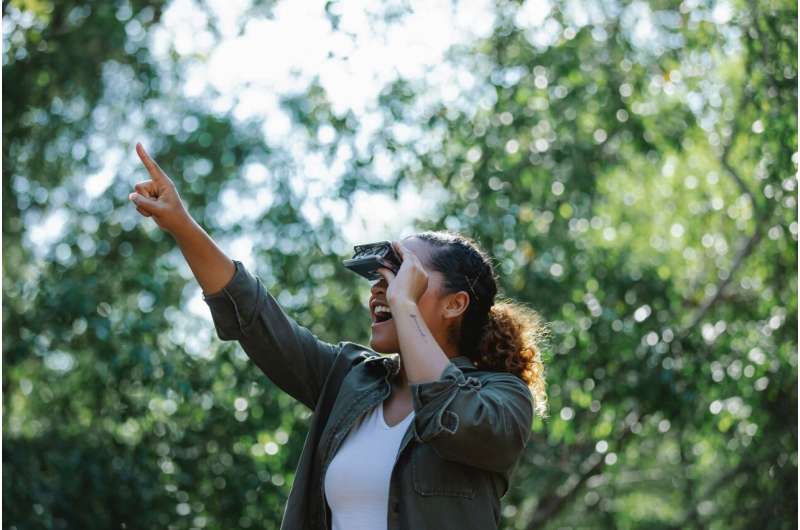
Summer is a popular season to get a pair of binoculars and go out looking for the birds, bears, and bobcats, a pastime that is significantly on the rise for members of Black, Indigenous, and people of color communities.
A study published in the journal People and Nature provides new insight on the variables that encourage and foster participation.
“A lot of research prior to ours focuses on a deficit-based framework,” said Kelsey Jennings, the paper’s lead author and a graduate student in Virginia Tech’s College of Natural Resources and Environment. “We wanted to take more of an encouragement focus, understanding what is helping people participate and how we can build those strengths out to programs and agencies across the country.”
Utilizing a national survey of some 17,000 wildlife viewers across a range of ethnic and racial groups, the study discovered:
- Many ethnoracial groups were less likely to identify as wildlife viewers but more likely to say wildlife viewing is more important to their lives.
- Wildlife viewers from ethnoracial groups received more support in pursuing wildlife viewing from community members—including friends, family, peers, and mentors—than white respondents.
- Participant self-identification as a wildlife viewer was another indicator of greater participation in wildlife viewing.
Jennings, who conducted this research as part of her master’s degree in the Department of Fish and Wildlife Conservation, said the paper’s findings reveal a need for further research that considers participation and access through lens of intersecting experiences of marginalization.
The paper’s findings contribute to the United Nation’s Sustainable Development Goal to Reduce Inequality by empowering inclusion in communities.
“Coming into this work, we knew that we wanted to look at communities of color and see if there are varying trends in how they engage with natural environments,” said Jennings. “This study makes important first steps toward exploring overlapping systems of marginalization, which can create unique challenges and barriers that make it harder for the outdoors to be accessible to everyone.”
Assistant Professor Willandia Chaves echoed that an assets-based perspective is critical to understanding and supporting the participation of wildlife enthusiasts.
“By moving from a focus on reducing barriers to also looking into what assets people rely on to participate, we can create more effective programs and increase equitable participation in outdoor recreation,” said Chaves, an affiliate faculty member of the Global Change Center and the Center for Emerging, Zoonotic, and Arthropod-borne Pathogens.
Jennings came to Virginia Tech after working as an urban outreach specialist for the Minnesota Department of Natural Resources, where she developed access pathways to better reach urban communities in the state.
“Minnesota has a lot of state-owned public land, and there’s a strong culture around getting outside and enjoying the outdoors,” said Jennings. “But there is still that discrepancy between who is getting outdoors and who is not.”
Jennings will continue her education and research at Virginia Tech, starting work on a Ph.D. this year that will explore bird-friendly maple syrup production under the supervision of Associate Professor Ashley Dayer, another author on this paper and an affiliated faculty member of the Global Change Center and the Center for Coastal Studies, both in the Fralin Life Sciences Institute.
“I’m very interested in work that marries ecological science with human dimensions, and Dr. Dayer and Dr. Chaves are both incredible leaders in that space,” said Jennings.
More information:
Kelsey Jennings et al, Social support and identity promote diverse participation in wildlife viewing, People and Nature (2024). DOI: 10.1002/pan3.10689
Citation:
New study views wildlife through the lens of diversity (2024, August 9)
retrieved 9 August 2024
from https://phys.org/news/2024-08-views-wildlife-lens-diversity.html
This document is subject to copyright. Apart from any fair dealing for the purpose of private study or research, no
part may be reproduced without the written permission. The content is provided for information purposes only.







